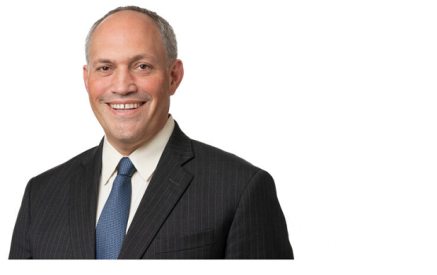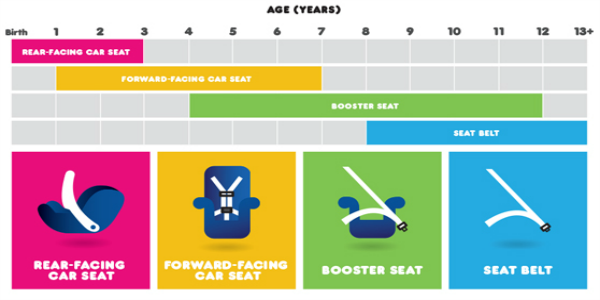Torquenews.com. From the time they have children until their kids finally graduate from the booster seat, parents are having to make the call as to when he/she is ready for the next type of safety seat. Here is a easy guide to understanding just when your child is ready to make that move.
Becoming a new parent is daunting for many reasons, not the least of them because you have to figure out how to buckle your newborn into a car seat. There are so many variations, such variety—what is a parent to do? But, it is not only parents of new babies who may get confused. As a child grows, he (or, of course, she) still needs a car seat, but safety needs change. Here is a simple overview for parents, to help guide them thru their car seat years.
Birth – 12 Months
At this age, your child should always be in a rear-facing seat. Some seats—specifically infant-only seats—can only be used in the rear-facing position, so it makes it easy enough to remember how to position the seat. Some seats are convertible, and these may allow you to keep your child in a rear-facing position for a longer period, as they have higher weight and height limits.
Parents should be aware, the safest place for your child to ride is in a rear-facing car seat, in the back seat. In a crash, the rear-facing car seat protects your child’s head, neck, and spine. So, do not be in a rush to get him into a forward-facing seat!
1 – 3 Years
It is a good idea to keep your child rear-facing as long as possible when riding in your car, as it is the safest position, indicates SafeCar.gov. As long as your child is still within the weight and height ranges for his rear-facing seat, you should place the seat rear-facing. There is no age when he is “too old” to be riding rear-facing; height and weight are the key to determining whether he should still be in a rear-facing seat. The next step will be forward-facing with a harness, which kids will generally reach in the next age range.
4 – 7 Years
At this age range, your child will typically be in a forward-facing car seat with a harness, still in the back seat. You should continue to place him in this type of seat as long as he remains within the specified weight and height ranges for the seat you have selected. When your child exceeds these guidelines, it is time to move to the next category: booster seats.
In some cases, however, it is possible that a child may outgrow the weight/height limit of a forward-facing seat with a harness, and not quite be ready for a proper fit into a booster seat. If this is the case with your child, look for a forward-facing harness seat with a higher size limit instead of going to the booster just yet. Proper fit in these seats is imperative to keep your child safe!
8 – 12 Years
Until your child can buckle his seatbelt properly, he should be in a booster seat. Some kids in this age range will complain about not being allowed to ride in a regular car seat, but you are the parent! A child should never be rushed into a booster seat, nor should he be rushed out of one. The lap belt of the seat belt should lie snugly across the upper thighs, not the stomach, and the shoulder belt should be snug across the shoulder and chest, not the neck or face. Until the seatbelt is well-fitting it is unsafe for him to be using it, and a booster seat is in order.
As with all child safety seats, follow manufacturer’s guidelines with your chosen booster seat, including weight and height ranges. Also, your child should still be riding in the backseat; it is still the safest place for a child to ride in your car, stresses SafeCar.gov.
By Mechele Dillard




















































